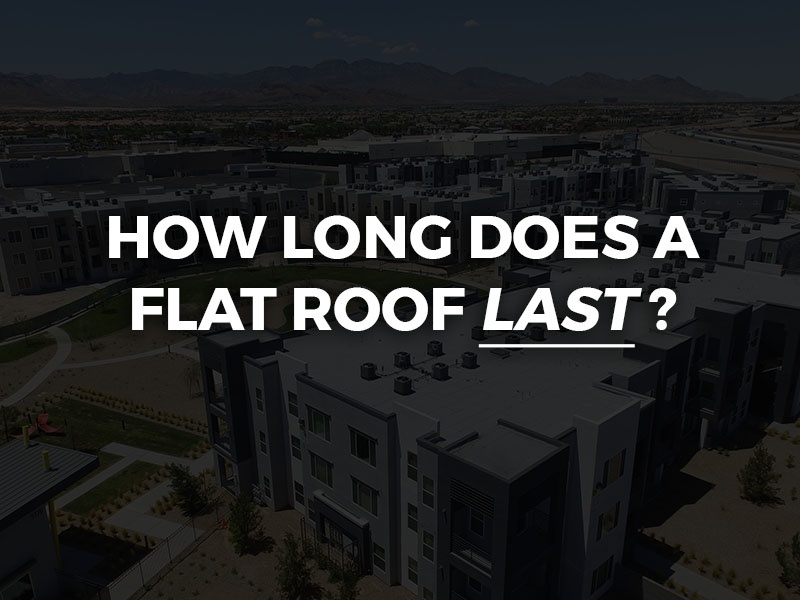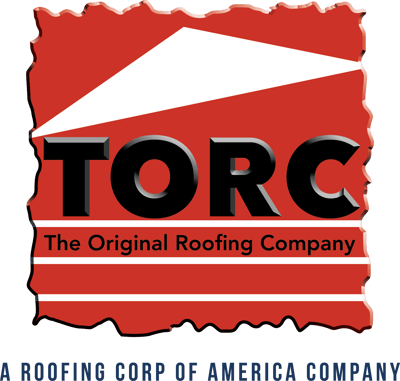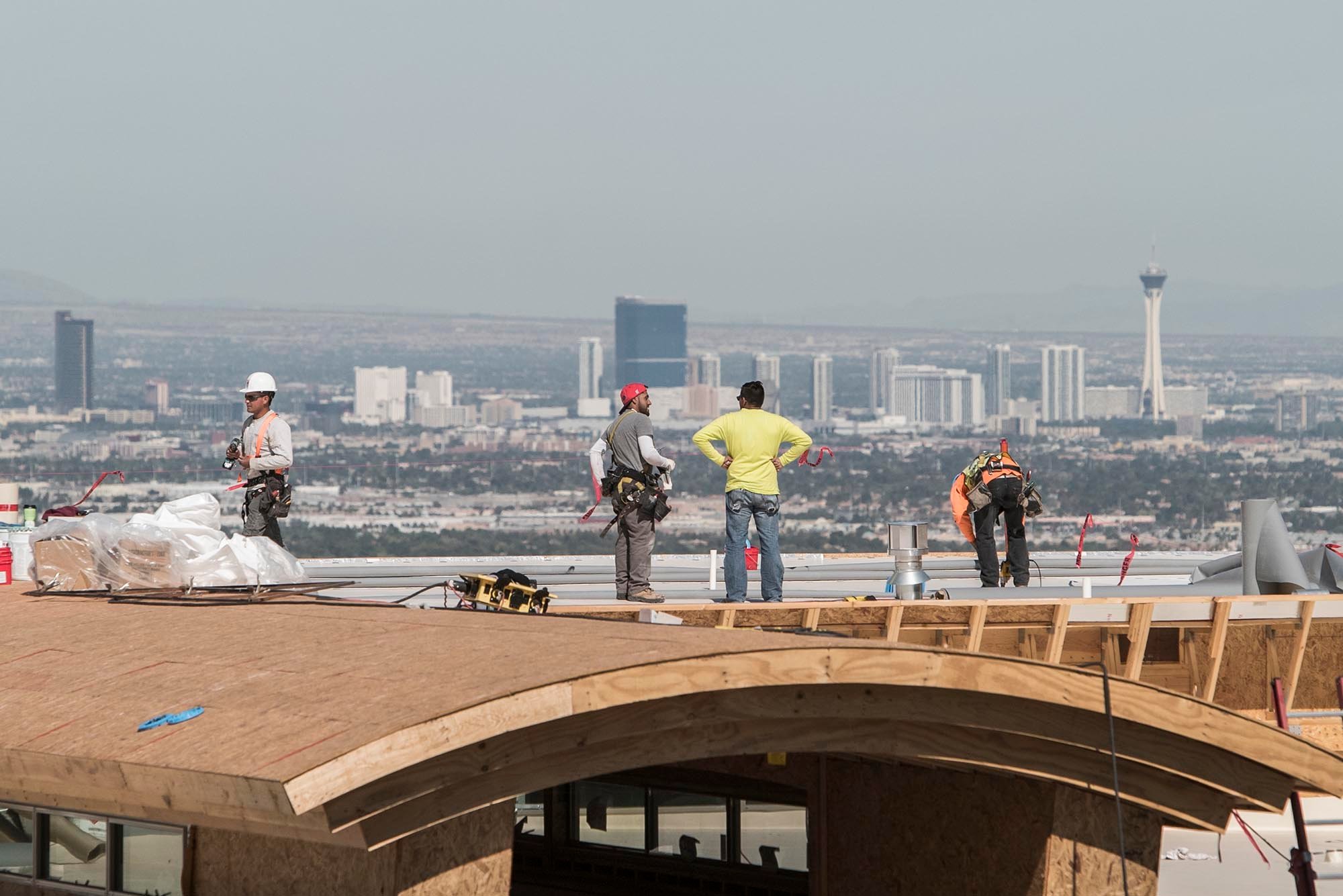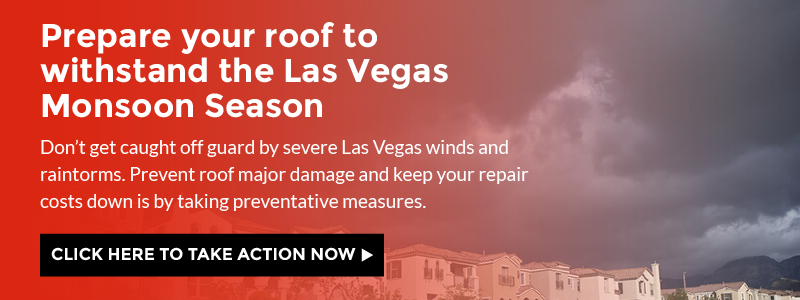
There are so many factors a person needs to consider when owning a commercial or industrial building. The last thing a commercial property owner or manager often considers is the condition of the building’s roof. In a dry desert such as Las Vegas, you might think that your roof needs less maintenance than buildings in other, wetter climates. However, the monsoon can sneak up on you, and summer rainy seasons have cost property owners millions of dollars in damages related to leaks and total roof replacements.
Contact Us for Commercial Flat Roofing in Las Vegas
(702) 739-7663
When was the last time your roof had a proper inspection? Since many commercial buildings have flat roofs, it’s important to know everything you can about this type of structure. Flat roofs are constructed differently, require special materials, and have a different lifespan than traditional pitched roofs.
Read More: How to Fix a Leaky Flat Roof
Here is some advice regarding the flat roof on your commercial property.
How Long Does a Flat Roof Last?
The lifetime of a flat roof can vary drastically depended on several factors. The central factors include quality of original workmanship and building materials. The problem with flat roofs is that they do not offer as much drainage as traditional pitched roofs. This means that water can get trapped in any holes or seams in the roofing material. If you go for long periods without having your roof inspected, this sitting water can create lots of problems for you. If the original contractor did not make sure to properly seal all parts of the roof, then your flat roof will not last very long at all. Further, if the materials used to make your roof were cheaply manufactured, you may have more leaks, holes and worn out spots on top of your building.
Types of Flat Roof
It may be surprising to learn that there are in fact several types of flat roofs that a commercial or industrial building might have. Each one has a slightly different lifespan, installation process and cost.
Read More: What Is the Best Flat Roof Material?
BUR (Built Up Roof)
A built up roof, BUR for short, may be the type of roof that you are most familiar. This is constructed by literally building up multiple layers of ply sheets and heated asphalt. This is a very cost-effective roofing material, typically varying from $5.00 and $7.00 per square foot of coverage. The top can also be layered with gravel for even more durability. In hot climates, such as Las Vegas, many people choose to coat the tops of these flat roofs with reflective paint to help reduce building cooling costs.
BUR roofs are great for roofs that may need to be very durable. However the added layers of asphalt and additional gravel can make for a very heavy roof. These roofs typically last for 15 to 20 years.
PVC
These roofs tend to need very skilled laborers to install the PVC membrane correctly. This membrane is composed of large sheets made of PVC material that is the main waterproofing component of these types of roofs. Each piece of PVC must be hot welded to the surrounding pieces. While this provides an excellent water barrier, it is also a labor intensive process. This will cost you about $7.00 to $10.00 per square foot in installation costs. However, these roofs can last up to 30 years with proper maintenance. PVC roofs also help with energy efficiency. White or light colored PVC roofs help to reflect the sun’s heat.
EPDM
Roofs made with EPDM are essentially large rubber stickers which are rolled out carefully onto your roof. Since they are a single large piece of rubber, they are quite unwieldy to install. Contractors must be especially careful to not allow any air pockets to form because this may contribute to roof leakage later on. These rubber sheets cost between $4.00 and $7.00 per square foot and are a good economical choice for roofing material. Commonly known as “rubber roofs,” they only last from 10-15 years. Also, the seams on EPDM roofs are not as durable or strong as the seams of PVC roofing material.
TPO
TPO is a type of flat roofing material that is similar to both EPDM and PVC. It has the durability of PVC seams with the cost effectiveness of EPDM. However, TPO roofs generally last anywhere from 7 to 20 years with a cost per square foot ranging from $5.00 to $8.00. The material itself is a mixture of ethylene, rubber and propylene that is chemically affixed to the roof substrate directly. It’s important to know that since TPO roofs are a generally newer type of roof, it’s important to find a skilled roofing contractor who is familiar with this type of material.
Spray On Coating
Extremely economical, aesthetically pleasing, and durable, spray-on roofs are a great choice for most commercial or industrial roofs. The actual application of a spray-on roof can be a delicate process as it must be applied evenly. Coating for roofs is reflective and helps to save on the utility bills for cooling an industrial building. The cost for a spray-on roof coating varies depending on the type of material used. Polyurethane foam is the least expensive, starting around $3.00 per square foot. At $6.00 per square foot, acrylic roofs are also an option. The most durable and functional spray-on roof coating, silicon, will cost you around $10.00 or more per square foot. Spray-on roofs last buildings approximately 20 years.
Modified Bitumen
Bitumen is applied in layers much like a built up roof. Except it is also heated like PVC or EPDM to help with adhesion and waterproofing. Because of the specialized installation process, it can be very labor intensive to have this type of roof on your building. Still, it is one of the most cost-effective roofing materials, starting at $3.00 per square foot. It also lasts from around 10 to 20 years, so it has quite a bit of durability. Since it is a multi-ply roofing, there is less risk of tears and holes than if you had a single membrane roof such as PVC.
As a building manager or owner, you have several options for roofing when it comes to your flat roof. And since many Las Vegas commercial buildings have flat roofs, it’s important to know all you can about them. There are several economic and aesthetic advantages to flat roofs, and most importantly, they can last you a very long time with proper maintenance. Now that you know more about the components of a flat roof, you’ll be better able to handle any issues regarding a full roof replacement or repair.





